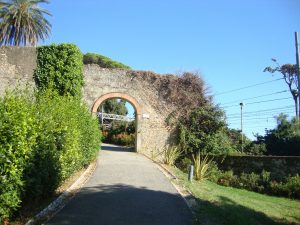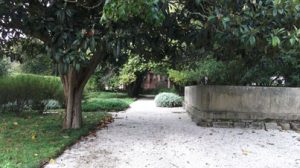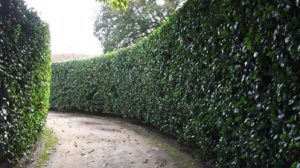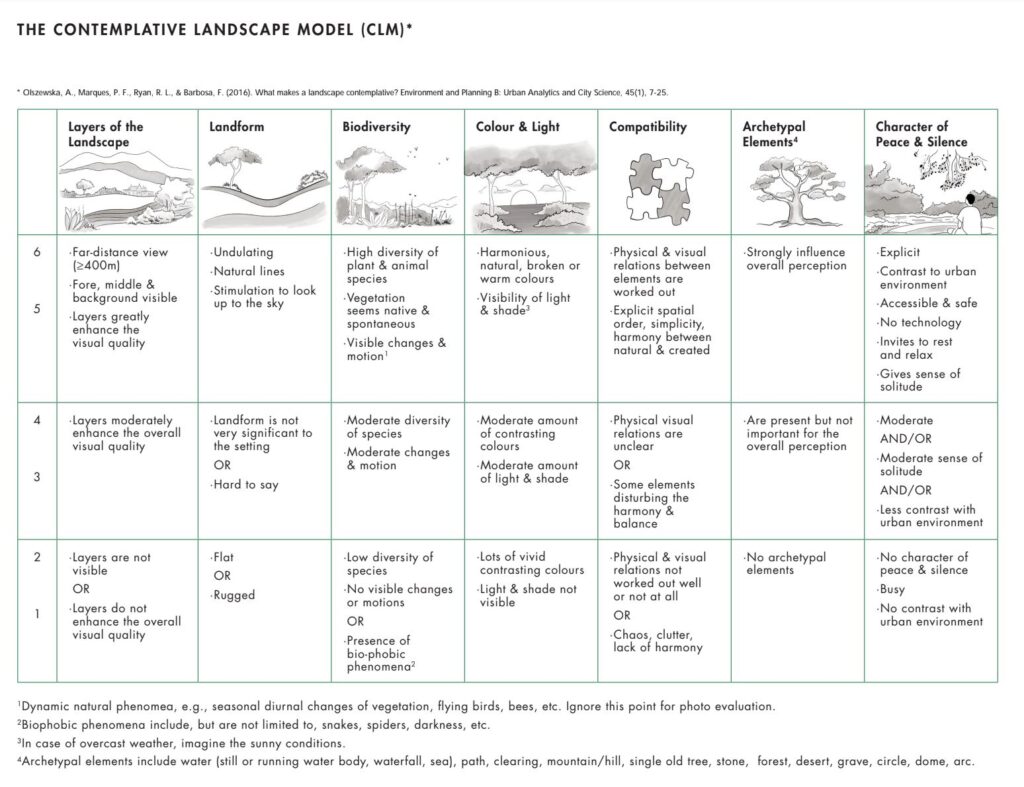CLM and mental health
CLM is a tool for Urban Green Space visual quality evaluation, addressing the existing need for mitigating the burden of mental health resulting from urbanicity and filling the gaps in knowledge on UGS for mental health.
CLM measures the extent to which a given landscape view has the potential to positively influence the mental health and well-being of individuals passively exposed to them. According to its original premis the landscape components considered most contemplative, when aggregated within the scene, would trigger an increase in low frequency brain activity associated with momentary decreased cognitive strain, increased relaxation and positive affect during an act of just a passive observation of the landscape [1] This experience could balance out the opposite brain reactivity, arising with high information processing typical with the exposure to urbanized environments [2]. Such brain response patterns have been linked to number of conditions including mood and anxiety disorders [3]. Based on this evidence, we refer in what follows to these effects using the terms “salutogenic”, “positive mental health outcomes”, and “mental health and well-being”.
The goals of the CLM are to:
(1)- identify and evaluate the environments that promote mental health and well-being within cities, and to
(2) inform landscape design and urban planning practice with specific features and components of the UGS landscape scenery. The use of CLM is thoroughly described in the recent textbook “Neuroscience for Designing Green Spaces: Contemplative Landscapes” [4].
Contemplative Landscape Model: Background and Characteristics
As an expert-based tool, it requires its users to have received formal training in landscape architecture, architecture, or urban design disciplines. The object of the assessment is a landscape scene as perceived by the human eye. It can therefore be an actual onsite view or a photographic or videographic representation for off-site assessment. CLM consists of seven items: (1) Layers of the Landscape, (2) Landform, (3) Biodiversity, (4) Color and Light, (5) Compatibility, (6) Archetypal Elements and (7) Character of Peace and Silence, to be assessed using a 1-6-point scale. The overall CLM score is the average of the score of these seven sub-categories.
Contemplative_Landscape_Model_II (download & print)
The CLM is rooted in traditions of early urban parks design while being informed by an evidence-based approach. Its items were determined based on extensive literature review, including studies on previous frameworks of landscape design theory and aesthetics. The focus of CLM on the qualities of individual scenery echoes the concepts of early landscape architecture theory, when it was believed that specific aspects of natural scenery can have strong “curative value” (Beveridge & Rocheleau, 1995). Frederick Law Olmsted, known as the “father of landscape architecture,” already in the 19th century believed in the salutogenic power of urban parks, driven by the elements and features in their scenery. He also believed that the benefits from these scenery exposures are delivered unconsciously. In one of his texts, he wrote:
“…the highest value of a park must be expected to lie in elements and qualities of scenery to which the mind of those benefitting by them is liable, at the time the benefit is received, to give little conscious cogitation” (Olmsted, 1881, p. 365).
The CLM has received increasing interest over the years among professionals and researchers. Most notably, it was acknowledged by the National Parks Board in Singapore in their urban greening for health agenda [4], and has been utilized by researchers and professionals (e.g.[5][6][7]).
References:
- Olszewska-Guizzo, A., Fogel, A., Escoffier, N., Sia, A., Nakazawa, K., Kumagai, A., Dan, I., & Ho, R. (2022). Therapeutic Garden With Contemplative Features Induces Desirable Changes in Mood and Brain Activity in Depressed Adults [Original Research]. Frontiers in Psychiatry, 13. https://doi.org/10.3389/fpsyt.2022.757056
- Olszewska-Guizzo, A., Fogel, A., Benjumea, D., & Tahsin, N. (2022). Sustainable Solutions in Urban Health: Transdisciplinary Directions in Urban Planning for Global Public Health. In Sustainable Policies and Practices in Energy, Environment and Health Research (pp. 223-243). Springer.
- Ancora, L. A., Blanco-Mora, D. A., Alves, I., Bonifácio, A., Morgado, P., & Miranda, B. (2022). Cities and neuroscience research: A systematic literature review. Frontiers in Psychiatry, 13.
- Olszewska-Guizzo, A. (2023). Neuroscience for Designing Green Spaces: Contemplative Landscapes. Taylor & Francis.
- Sia, A., Tan, P. Y., & Er, K. B. H. (2023). The contributions of urban horticulture to cities’ liveability and resilience: Insights from Singapore. Plants, People, Planet.
- Sia, A., Tan, P. Y., Kim, Y. J., & Er, K. B. H. (2023). Use and non-use of parks are dictated by nature orientation, perceived accessibility and social norm which manifest in a continuum. Landscape and Urban Planning, 235, 104758.
- Salleh, M., Othman, N., Malek, N., Mohamed, N., & Zainal, M. (2021). Prospects of contemplative urban park from expert perspectives. IOP Conference Series: Earth and Environmental Science.
- Yanru, H., Masoudi, M., Chadala, A., & Olszewska-Guizzo, A. (2020). Visual Quality Assessment of Urban Scenes with the Contemplative Landscape Model: Evidence from a Compact City Downtown Core. Remote Sensing, 12(21), 3517.
CLASS stands for Contemplative Landscape Automated Scoring System. And it is the software that enables instant scoring of any digital landscape image according to seven contemplative landscape features:

How was CLASS developed?
The research on CLASS started with the process of operationalization of the concept of contemplative landscapes. This was based on the assumption that each landscape setting (scene, view) has some level of the contemplative values (aka. sensori-emotional values that may influence our emotional states, sense of well-being or even physiological processes.
There are already existing tools that enable recognizing and evaluating the scenic beauty or visual quality of a landscape. However, they are not calibrated to serve for the typically urbanized context, such as urban parks, gardens and different types of areas touched by landscape architecture design. Another problem with so far existing evaluation tools is the problem with expert-based approach. The main limitation for all expert-based tools is the low level of precision, reliability and validity. This means that the differences between responses of different experts about the same landscape are sometimes as big as differences between two different landscape settings.
We wanted to overcome these limitations, and create a new tool, a Contemplative Landscape Model, that we tested for reliability and validity. When our traditional tool was ready, we asked a group of international experts to annotate the set of images, using our tool. The details of that process was published in a paper titled “What makes a landscape contemplative?” [1]The database of their responses served as a training data for our neural network.
After months of testing, we were able to choose the combination of ANN models that would produce the best combined contemplativeness score and created the CLASS scoring system that can evaluate the contemplativeness of landscape images with scores similar to those of experts. The figure below presents the performance of the CLASS prototype in comparison to “real experts”. The detailed process is described in the paper titled “CLASS: Contemplative landscape automated scoring system” [2].

What is CLASS?
We can say that CLASS is an artificial expert’s brain trained to classify the level of contemplativeness of the landscapes, combining the expertise of 10 international academic experts. It recognizes seven key features of a contemplative landscape within an uploaded digital picture, and gives an immediate, objective score for each of the seven features as well as the total contemplative score. CLASS is also constantly learning creating a database with every picture, so the more it works the more precise and intelligent it becomes.
Anybody with a license subscription can access the CLASS via online, where, through the friendly interface they can upload any digital image they want evaluated and obtain instant scoring of the contemplativeness of a picture.






How to select the photographs for CLASS?
CLASS is sensitive only to images of landscapes of urban parks and gardens so it wouldn’t work if we upload a photo of a puppy, or any other than it is not designed for. In order to obtain more precise scores, we recommend to upload a good quality, digital photographs of a clear view over the space, from a ground level (eye level of a standing person) in daylight, and without animals or too many people within the view. Some examples are given aside. The image should be taken in most interesting for us weather conditions, so for example, if we want to see how contemplative is the space in general, we should take a picture in the weather conditions that are the most common, and most likely for largest number of people to be seen.
How much does it cost?
We are a non-profit organization so we consider using of the CLASS as pro-bono approach. However, because of the costs of the servers, and maintenance of the software we will charge private entities who want to use it. The costs of a license subscription can be found here along with the payment method.
Does it really work?
As much as it is surprising and hard to believe, YES! If you don’t believe it, please check it out for free through our demo version!
References:
- Olszewska, A. A., Marques, P. F., Ryan, R. L., & Barbosa, F. (2016). What makes a landscape contemplative?. Environment and Planning B: Planning and Design, 0265813516660716.
- Navickas, L., Olszewska, A., & Mantadelis, T. (2016, June). CLASS: Contemplative landscape automated scoring system. In Control and Automation (MED), 2016 24th Mediterranean Conference on (pp. 1180-1185). IEEE.
www.eascape.org | MetaQuest

Research shows that what we are exposed to passively during the day in the course of our live can have a tremendous impact on our mental health and wellbeing. It is also demonstrated by the research that the exposures to the urban built-up environments is detrimental to our health, and exposure to certain types of natural landscapes can do wonders for our ability to restore our attention, decrease stress levels, improve the cognitive functions, productivity, creative performance and even strengthen the social bonds.
In the urban life there is not much time left for the daily exposures to natural environments, and even if one would visit contemplative parks everyday, in many northern countries, it is usually very gray and cold for large portion of the year. There are also groups of people, in hospitals, nursing homes, etc who simply cannot walk out to the park.
We recommend our report: Virtual Healthy Environments: Feasibility Study in Societies Affected by COVID-19.
EASCAPE
is a mental health & well-being self-care tool, based on VR simulations of landscapes that contain attributes derived from evidence-based design, tested scientifically regarding the VHE’s potential to improve mental health, well-being and cognitive performance in users. The personalised interventions targeting various mental health issues and pathologies are being developed.
EASCAPE is not a game.
It is a new self-care tool that combines knowledge of neuroscience, landscape architecture and VR technology to give you the amazing opportunity to connect with nature right from the comfort of your own home.
It is available for free through MetaVerse: https://www.oculus.com/experiences/quest/3526048064110964/


